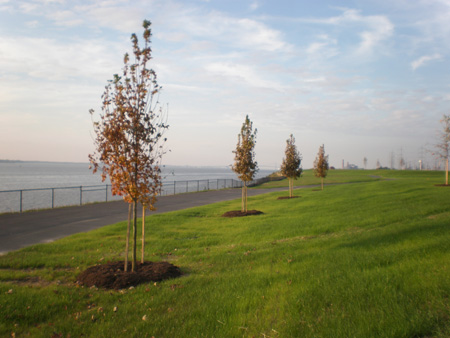Long-term stewardship (LTS) is the maintenance and monitoring of the remedial measures taken at a site to maintain the desired level of protection of human health and the environment over an extended period of time.
Remediation Section
391 Lukens Drive
New Castle, Delaware 19720
302-395-2600
Long-term stewardship is required under subsection 12.7.5 of Delaware’s Regulations Governing Hazardous Substance Cleanup (7 DE Admin. Code 1375) and generally consists of two major components:
The DNREC Remediation Section has published guidance for developing long-term stewardship plans for sites remediated under the Hazardous Substance Cleanup Act (HSCA). The guidance identifies some of the major components of a long-term stewardship plan, provides a framework for what DNREC expects from a plan, gives details on what criteria DNREC will use in follow-up inspections, and lists some of the information required in long-term stewardship reports.

Sites within the long-term stewardship program rely on institutional controls. These are non-engineered instruments such as administrative and legal controls that help minimize the potential for human exposure to contamination and/or protect the integrity of the remedy.
The DNREC Remediation Section recognizes institutional controls that have been recorded in an environmental covenant.
Operation and maintenance refers to all activities necessary to ensure the continued function of a remedial action.
Activities related to the operation include not just the day-to-day tasks associated with running an existing remedial system but also optimization of a remedial system to improve performance, upgrading remedial system components, worker safety, and documentation.
Maintenance activities include preventative measures, such as the changing of filters or lubrication of mechanical parts, and corrective measures or repairs.
Just as sites rely on institutional controls to ensure the continued protectiveness of the remedy, they also require periodic review and inspection. These inspections take two main forms.
The first is the owner/operator inspection. This is the first layer of protection. It includes any and all inspections/file reviews performed by the owner/operator on a regular basis. This should typically include a physical inspection. As with iperation and maintenance, documentation of the owner/operator inspections are a necessary aspect.
The second layer of protection is the review and inspection by the DNREC Remediation Section. This typically consists of a file review and may include a physical inspection of the property.
Long-term monitoring is necessary to ensure the continued protectiveness of a remedial action. It includes any type of sample collection and is usually performed on a reoccurring basis. This provides current data for decision making and serves as a trigger to identify possible failures in the remedial action.
Related Topics: cleanup, gmz, groundwater, remediation, stewardship, waste and hazardous substances